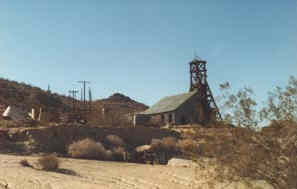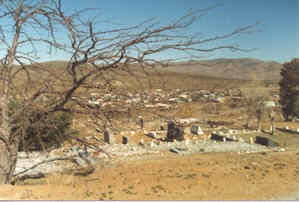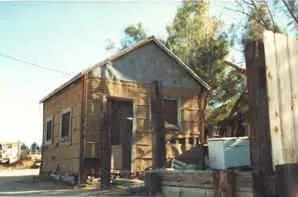JOHANNESBURG
|
JOHANNESBURG |
|
|
|
|
NAME:
Johannesburg COUNTY: Kern ROADS: 2WD GRID #(see map): 3 CLIMATE: Warm winter, hot summer BEST TIME TO VISIT: Anytime. |
COMMENTS:
A very interesting location. REMAINS: Many original buildings |
|
Today, the most striking evidence that Johannesburg was a prosperous turn-of-the-century mining town is the headframe of the King Solomon Mine (discovered in 1896) and the nearby town cemetery. No longer visible, however, are the Randsburg Railway tracks, which culminated in Johannesburg--making the town a booming transportation center for the region. Many surrounding mining communities--such as Randsburg, Ballerat and Skidoo--relied on the tracks to receive equipment and supplies, and to transport ore out of town for processing. When miners at Randsburg¹s Yellow Aster Mine constructed their own ore-crushing stamp mill (one of the largest ever made), the value of the railway greatly diminished. The line was sold to Santa Fe Railroad in 1903, and the tracks were eventually abandoned, then torn up sometime between 1933 and 1934. Johannesburg was a highly civilized family community, with streets planned out in an orderly arrangement, a working water system that extended to residences, a social organization whose clubhouse included a billiard table and piano...the town even boasted a nine-hole golf course. Among the town¹s buildings were boardinghouses, banks, churches, a post office, a music hall and two saloons--all occupied by a community of men, women and children who had little to do with the gambling, dance hall girls, and general rowdy living that¹s often associated with this era. For more detailed information, consult Ginny Clark¹s Guide to Highway 395 and/or Philip Varney¹s Southern California¹s Best Ghost Towns, both of which supplied the bulk of the above information. Submitted by: K. Allsbrook  King Solomon Mine Courtesy Dolores Steele  Johannesburg Cemetery Courtesy Dolores Steele |
 Johannesburg Courtesy Dolores Steele
|
|---|
|
|